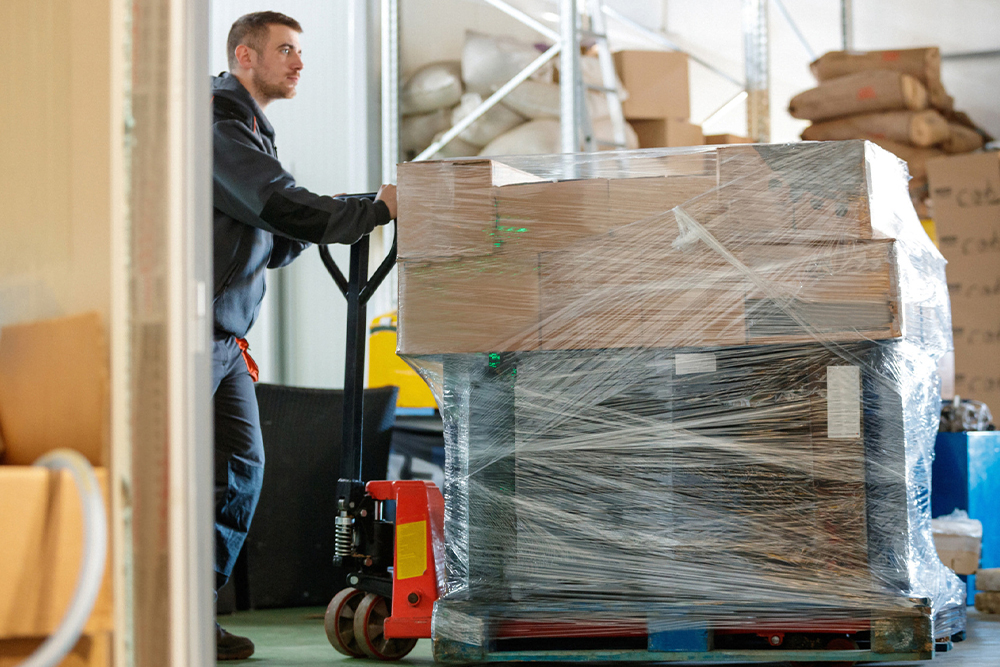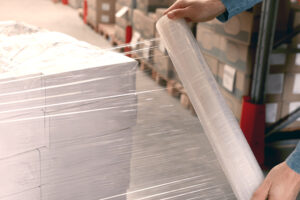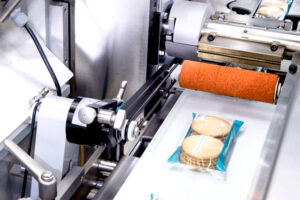For businesses that routinely ship and store large volumes of goods, pallet wrapping is a vital process in ensuring the stability and protection of products. High-quality pallet wrapping can significantly reduce the risk of damages during transportation and storage, saving both time and money on the road to delivering your goods safely to customers. At Australian Wrapping Company, we are committed to assisting businesses in mastering the art of pallet wrapping by providing state-of-the-art machinery, materials, and expert advice to enhance efficiency, improve load stability, and promote sustainability.
In this in-depth guide, we’ll reveal the secrets to successful pallet wrapping, delving into the various techniques and machinery available, including stretch and rotary arm wrappers, as well as the latest advancements in sustainable practices and materials. Moreover, we will provide hands-on tips for optimising your pallet wrapping process, helping you achieve greater efficiency and cost-saving benefits while minimising the environmental impact of your packaging operations.
With proper application and understanding of pallet wrapping best practices, businesses across various industries can achieve significant improvements in load stability, customer satisfaction, and overall sustainability. Embark on this journey with us, and unearth the keys to mastering the art of pallet wrapping, setting your business on a path to success and responsible growth in this ever-evolving marketplace.
Leave no stone unturned in your pursuit of pallet wrapping excellence – with the right equipment, materials, and strategies, you can elevate your packaging operations and propel your business towards unparalleled efficiency and sustainability. Join Australian Wrapping Company, and let us guide you on your journey towards pallet wrapping mastery.
Selecting the Right Pallet Wrapping Technique and Machinery
To achieve peak efficiency in your pallet wrapping process, selecting the appropriate technique and machinery is crucial. Factors to consider include the nature of your products, volume of pallets wrapped daily, and available space within your facility. Here, we explore the primary pallet wrapping techniques and equipment:
1. Manual Hand Wrapping: Ideal for businesses with minimal pallet wrapping requirements, manual hand wrapping involves applying stretch film to the load by hand. While cost-effective, this method can be labour-intensive and less consistent in attaining optimum load stability.
2. Stretch Wrappers: Stretch wrapping machines range from semi-automatic to fully automatic variants, with both turntable and rotary arm designs. These machines consistently achieve stable and secure wrapping, saving time, labour, and costs in the long run.
3. Rotary Arm Wrappers: Excellent for high-speed wrapping or for securing unstable, irregular loads, rotary arm wrappers rotate the film around the pallet without requiring movement of the load itself, ensuring maximum stability and efficiency.
Optimising Load Stability and Efficiency
Proper load stability and wrapping efficiency are vital for reducing product damages and enhancing overall business performance. Follow these expert tips to maximise your pallet wrapping effectiveness:
1. Consistent Wrapping Force: Ensure your pallet wrapper applies consistent wrapping force throughout the process, avoiding loose wrapping that could lead to load instability or overly tight wrapping that may damage the product.
2. Proper Pre-Stretch Settings: When using stretch wrappers, adjusting the machine’s pre-stretch settings can optimally elongate the film before it’s applied to the load, improving film efficiency and reducing material usage.
3. Overlap and Interlock: Ensure your pallets are wrapped with an adequate film overlap, typically around 10-30%, and secure the film around a stable surface, such as the pallet base or a hook point, to prevent unwinding.
4. Customise Wrapping Parameters: Tailor your wrapping parameters, such as film tension, number of wraps, and wrap position, to the specific needs of the load, taking into account factors like product shape, weight, and stability.
Embracing Sustainable Pallet Wrapping Practices
With a growing focus on environmental sustainability in business, adopting eco-friendly pallet wrapping practices is pivotal. Here are some best practices to promote sustainability within your pallet wrapping operations:
1. Recyclable and Biodegradable Films: Utilise environmentally friendly films, such as recyclable stretch films or biodegradable alternatives, to embrace a more sustainable approach and reduce your environmental impact.
2. Limit Film Consumption: Adjust your wrapping parameters and techniques to minimise unnecessary film usage while maintaining adequate load security. Implementing optimal pre-stretch settings and paying attention to recommended film overlap can significantly reduce film consumption.
3. Recycling Programs: Integrate an effective recycling program within your facility to ensure proper disposal and recycling of used packaging materials, further reducing waste and promoting a closed-loop recycling system.
Choosing the Right Stretch Films
Selecting the appropriate stretch film for your pallet wrapping needs is vital for maintaining load stability and protecting against external elements. Consider the following factors when choosing a suitable stretch film:
1. Film Thickness: Stretch film thickness, measured in micrometres (µm), directly influences the strength and durability of the film. Thicker films provide added strength for heavier or more challenging loads, while thinner films are more cost-effective and better suited for lighter loads.
2. Film Type: Choose between various film types, such as cast film or blown film, each with unique characteristics, advantages, and drawbacks. Cast films are readily available, cost-effective and provide high clarity, while blown films offer superior puncture resistance and load-holding force.
3. Hand vs. Machine Film: Determine whether your wrapping process requires hand film or machine film, depending upon the nature of your operations and the equipment being utilised.
4. Environmental Impact: As previously mentioned, consider environmentally friendly options like recyclable or biodegradable stretch films to reduce your ecological footprint and embrace sustainable practices.
Mastering Pallet Wrapping for a Prosperous and Sustainable Future
By understanding the nuances of pallet wrapping and implementing best practices regarding techniques, machinery, load stability, and sustainability, your business can attain unparalleled improvements in product protection, efficiency, and environmental stewardship.
Embrace the art of pallet wrapping with Australian Wrapping Company, and discover the potential to propel your company towards ever greater success and responsible growth within the modern marketplace. Let us be your trusted partner on this journey, supplying you with the finest pallet wrappers, materials, and expert advice to achieve the excellence in pallet wrapping your business deserves. Reach out to our team today, and unlock the full potential of your pallet wrapping operations.













